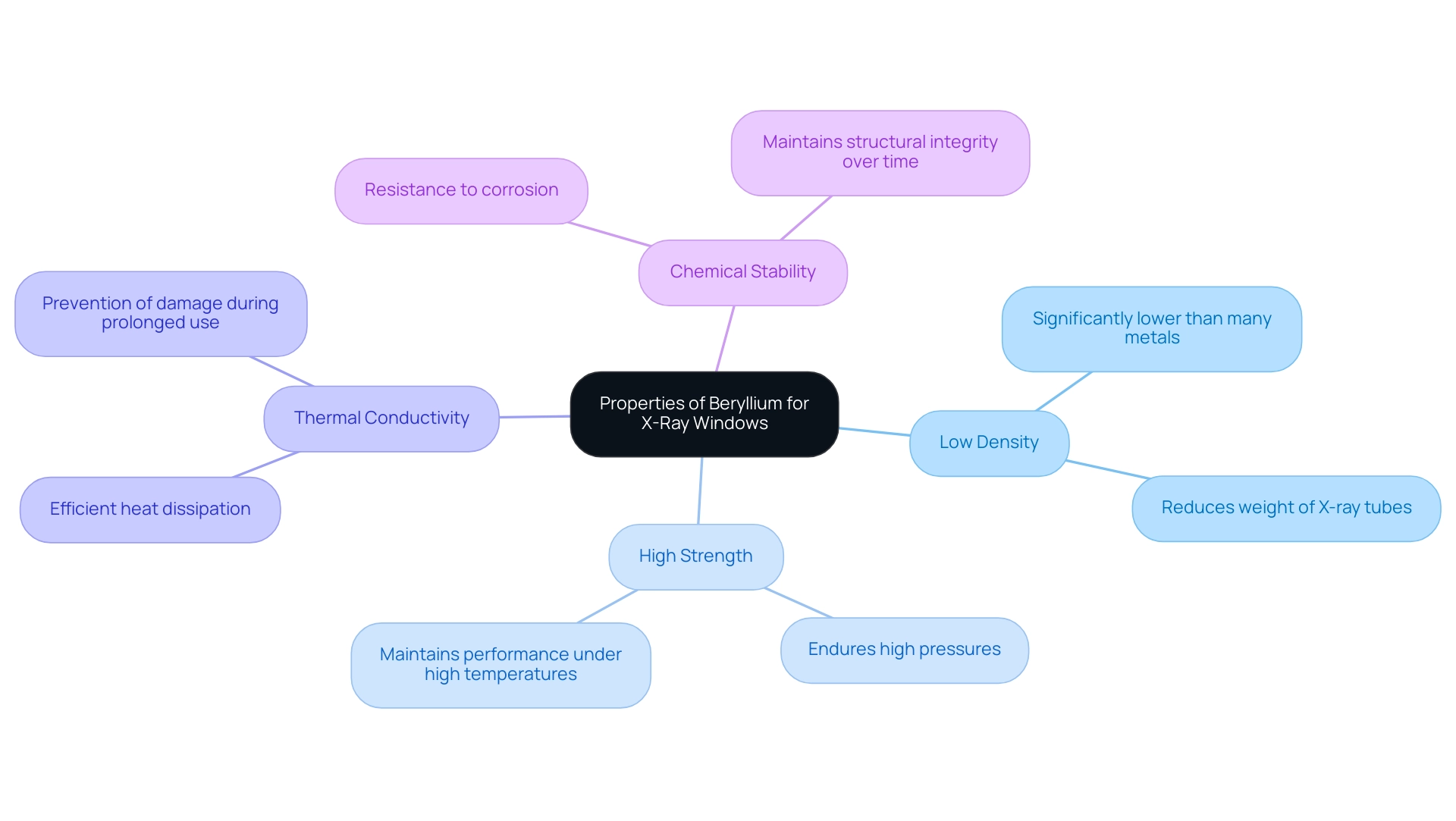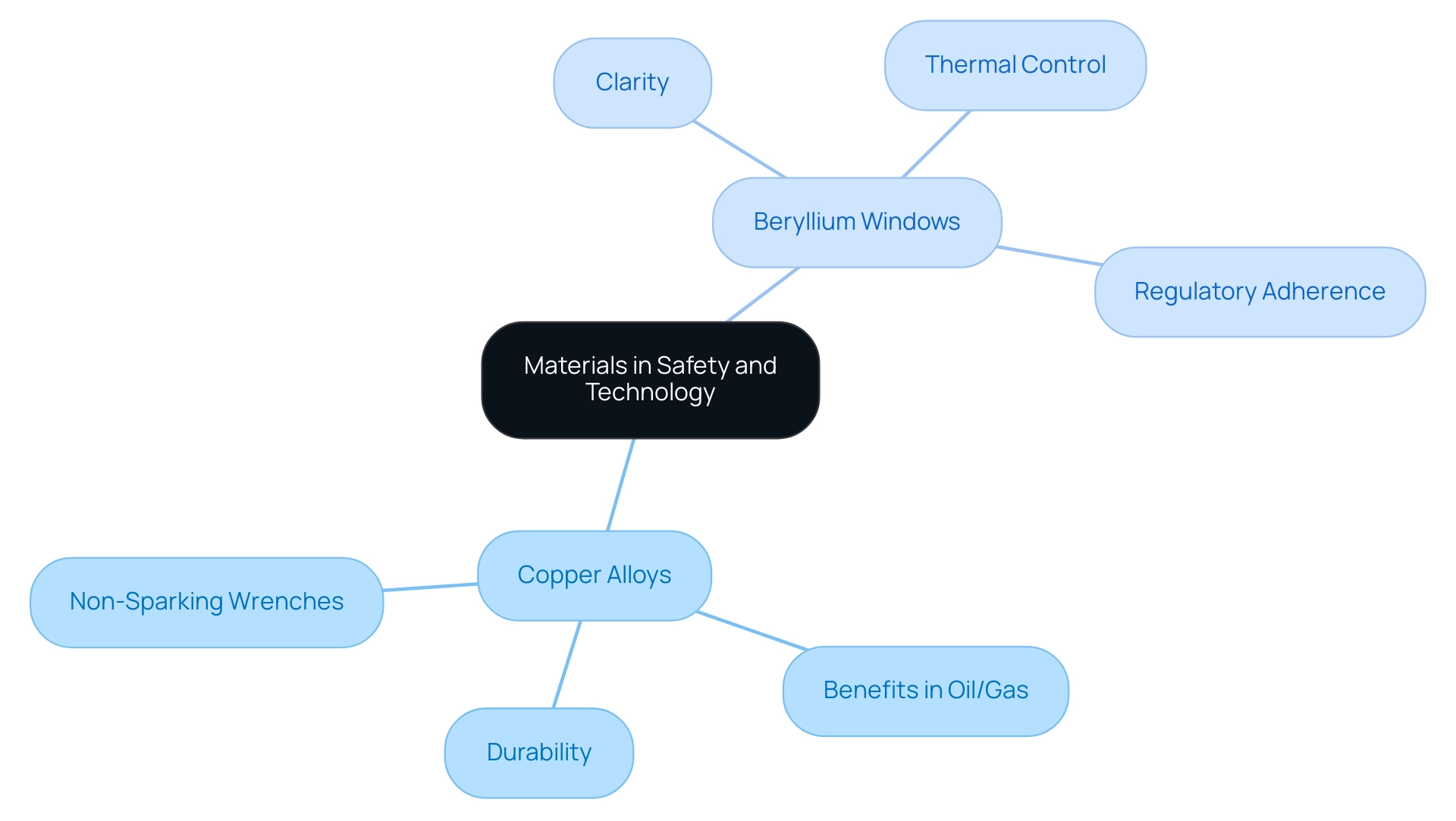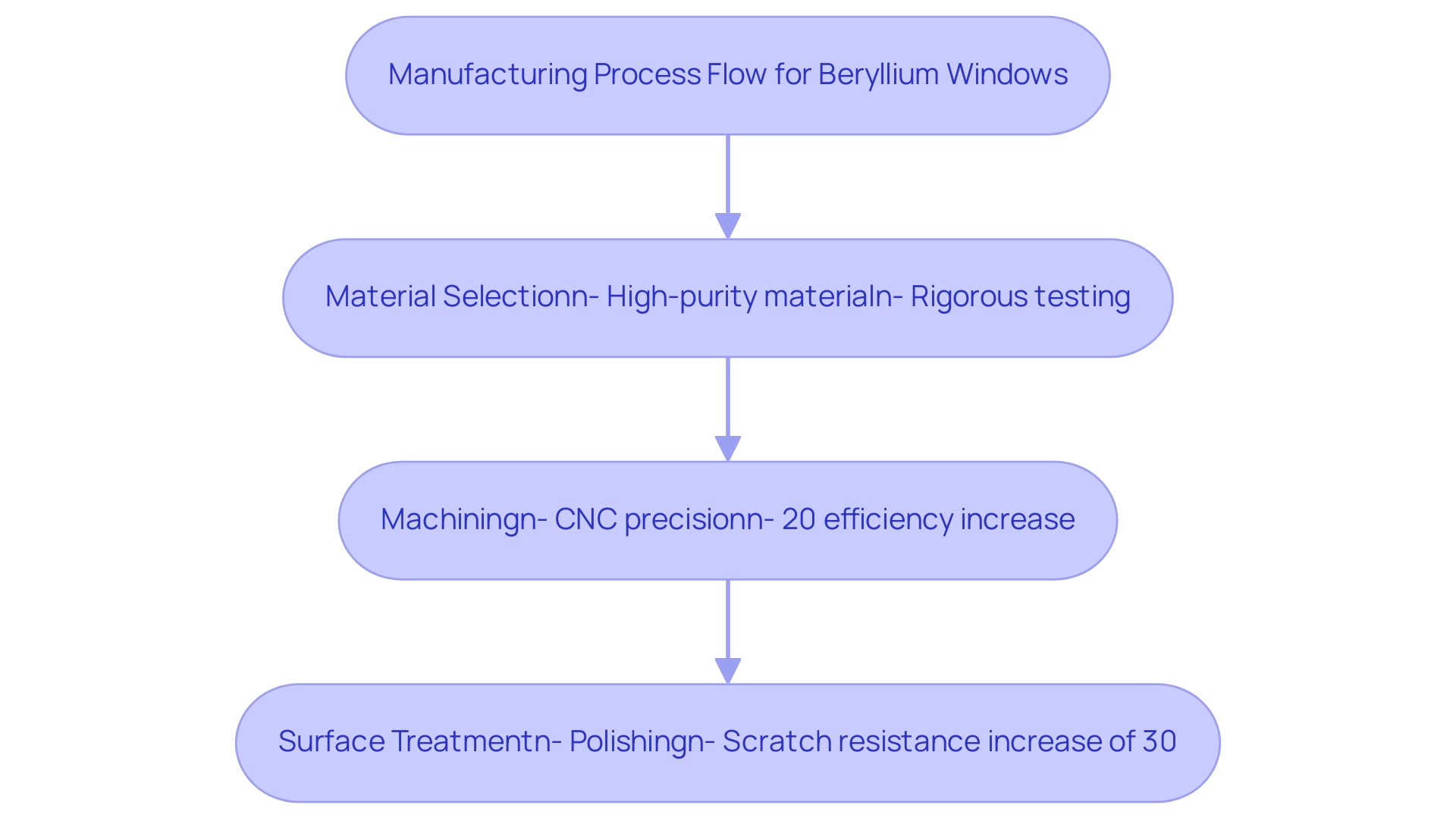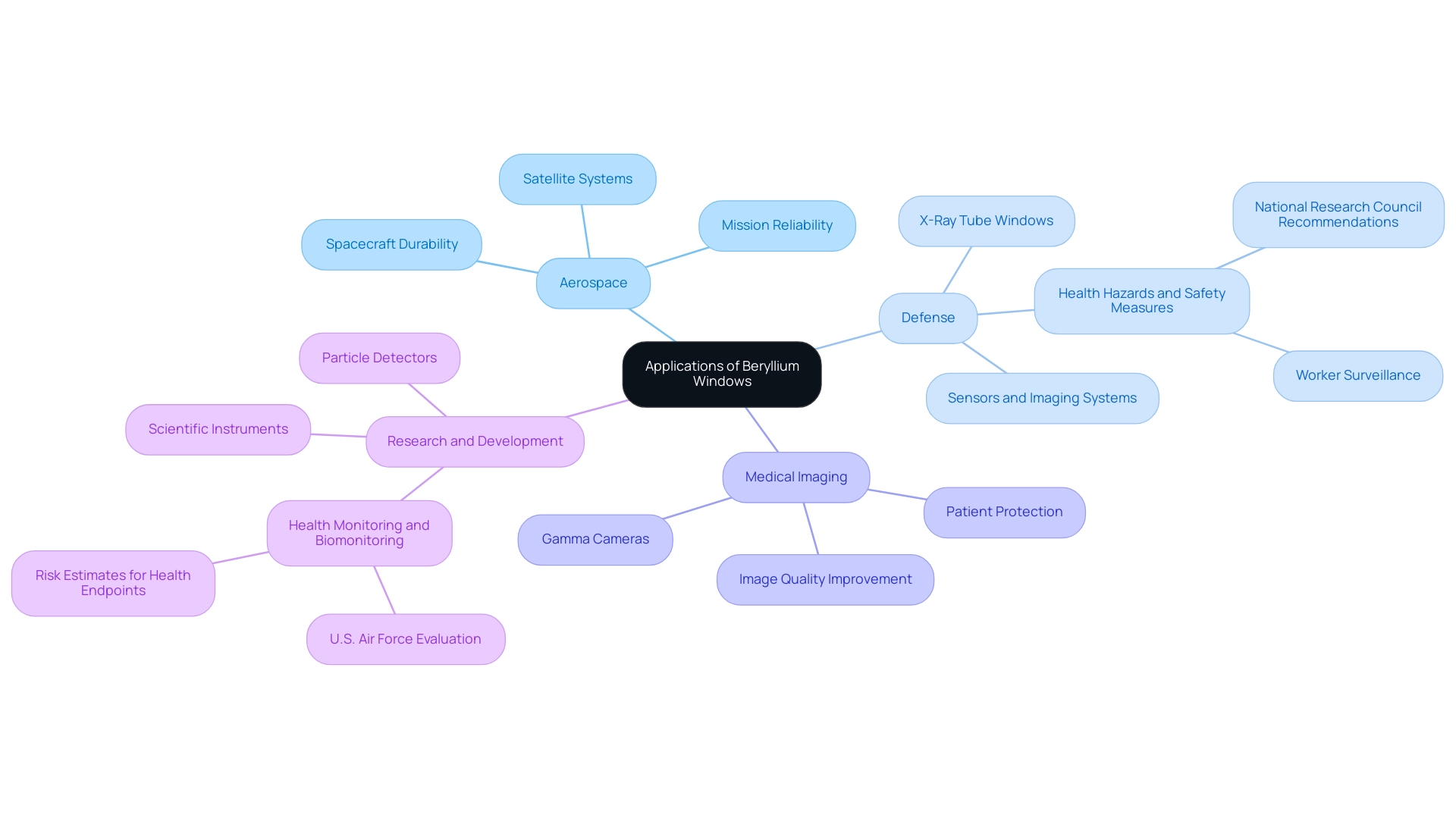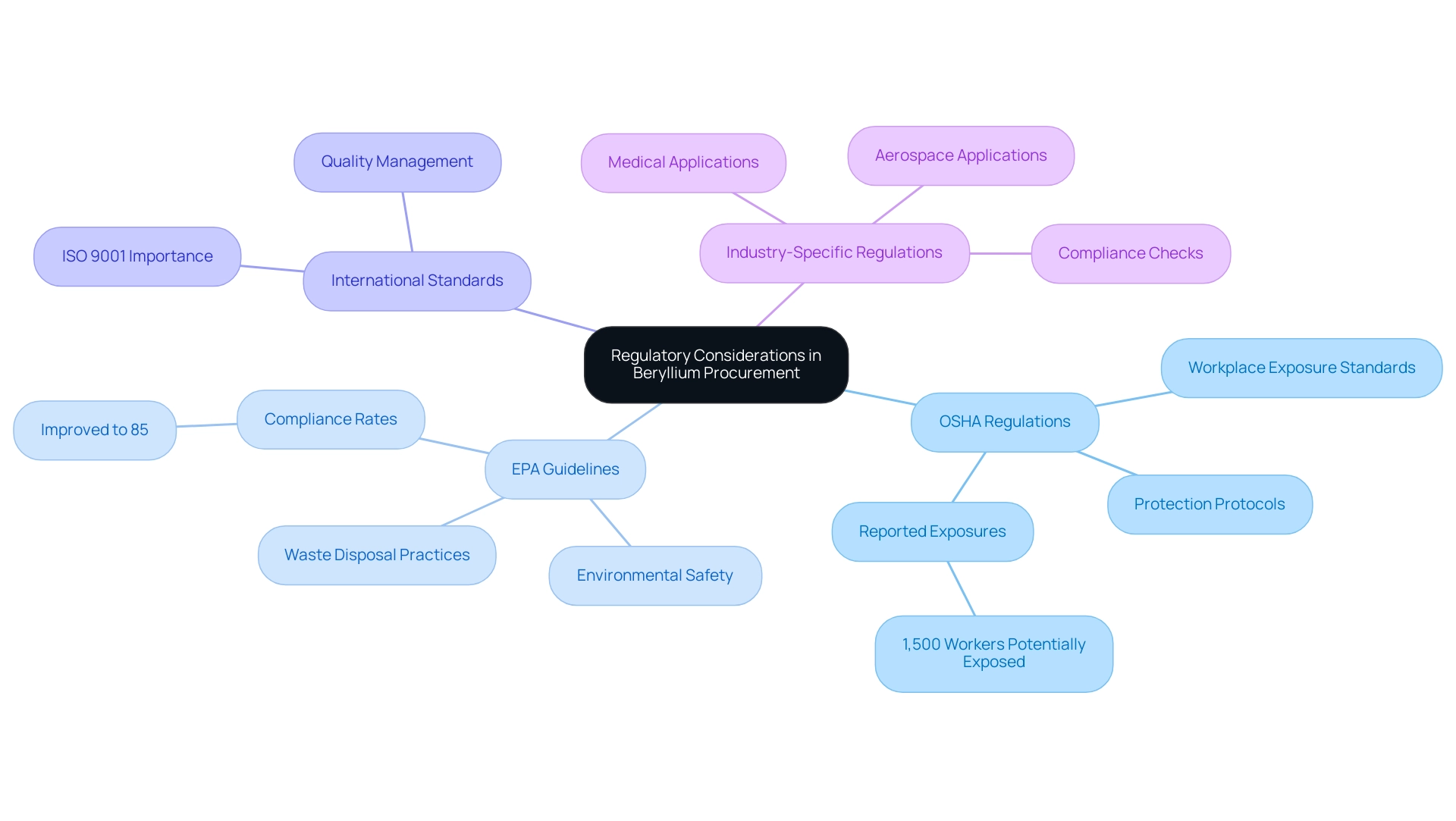Blogs

Understanding Beryllium Windows in X-Ray Tubes: A Complete Tutorial
Introduction
In the realm of advanced materials, beryllium has emerged as a pivotal player, particularly in the field of X-ray applications. Its unique properties—such as low density, high strength, and exceptional thermal conductivity—make it an ideal choice for X-ray windows, where performance and reliability are paramount.
As industries increasingly demand materials that not only enhance operational efficiency but also ensure safety, understanding the advantages of beryllium becomes crucial for procurement managers. This article delves into the multifaceted benefits of beryllium, from its manufacturing processes to its diverse applications across sectors such as aerospace, defense, and medical imaging.
Furthermore, it highlights the regulatory landscape that governs the procurement of this vital material, equipping decision-makers with the insights needed to navigate these complexities effectively.
Properties of Beryllium: The Ideal Material for X-Ray Windows
Beryllium, possessing an atomic number of 4 and an electronegativity of 1.57 on the Pauling scale, stands out as a lightweight metal defined by its remarkable properties that render it especially appropriate for X-ray uses. Key attributes include:
- Low Density: With a density significantly lower than that of many metals, this material contributes to the overall reduction in weight of X-ray tubes, which is advantageous for both design and handling.
- High Strength: Remarkably strong despite its lightness, it can endure the high pressures and temperatures that X-ray equipment often encounters, ensuring reliable performance under demanding conditions.
- Thermal Conductivity: This substance’s ability to efficiently dissipate heat is critical in maintaining optimal performance and preventing damage during prolonged use, a vital consideration in medical imaging tasks.
- Chemical Stability: Its resistance to corrosion and oxidation allows it to maintain its structural integrity over time, thereby enhancing the longevity and reliability of X-ray equipment.
These unique properties collectively position this material as an ideal choice for the X-ray tube beryllium window, significantly improving imaging quality while ensuring both durability and security in various uses. Additionally, Domadia stands out as a leading supplier and manufacturer of high-performance Beryllium Copper Plates, offering an extensive product range that includes foils, sheets, rods, and wires. Our commitment to innovative manufacturing and rigorous quality control ensures that clients receive top-tier Beryllium Copper solutions tailored to their specific needs.
The strategic advantages of partnering with Domadia are clear: we provide not only high-quality materials but also customization options that enhance the effectiveness of your projects. Recent advancements in research further affirm this element’s status as a leading material for X-ray applications, reinforcing its utility in the evolving landscape of medical imaging.
The Role of Beryllium Windows in X-Ray Tubes: Function and Importance
Copper non-sparking wrenches illustrate the benefits in performance and protection linked to these alloys. These tools are crucial in environments where spark generation poses a hazard, such as in oil and gas sectors or explosive atmospheres. The unique characteristics of copper alloy ensure that these wrenches are not only non-sparking but also durable and reliable under extreme conditions.
Furthermore, the uses of this element extend to components like the x ray tube beryllium window, where its clarity and thermal control features enhance operational effectiveness and regulatory adherence. As procurement managers aim to optimize material selections, comprehending the advantages of copper alloy and its safety characteristics is crucial for making informed purchasing choices.
For inquiries or additional details regarding copper products, Kovar, Mu-Metal, Nickel materials, and their applications, feel free to contact customer support.
Manufacturing Processes for Beryllium Windows
The production procedure of specialized panes is complex and requires accuracy at each phase. Key steps include:
- Material Selection: Choosing high-purity material is paramount to guarantee optimal performance and adherence to industry standards. This process involves rigorous testing and certification to ensure that the material meets specific requirements. For example, research indicates that employing this metal with a purity level of 99.5% or greater greatly improves the optical characteristics of the end product.
- Machining: Advanced precision manufacturing techniques, especially CNC machining, are used to attain the required thickness and form of the panels. This approach ensures high tolerances, which are essential for the performance of the final product. According to recent data, manufacturers utilizing CNC technology indicate a 20% rise in production efficiency.
- Surface Treatment: To improve the durability and optical performance of the material, various surface treatments are applied. Polishing is a common technique used to improve clarity and minimize surface imperfections, which is critical for applications requiring high transparency. Recent advancements in surface treatment technologies have led to coatings that increase scratch resistance by up to 30%, and these measures are part of the comprehensive quality control instituted for each batch of x ray tube beryllium window. This includes meticulous inspections and testing for parameters such as thickness, transparency, and structural integrity. Moreover, adherence to global regulations is rigorously checked for the x ray tube beryllium window, ensuring that the manufactured products meet both protection and quality criteria. The case study on IMTL257 Geometric Dimensioning and Tolerancing highlights the application of GDT concepts in ensuring these quality control measures meet industry benchmarks.
Understanding these manufacturing processes, along with the recent advancements and relevant statistics, equips procurement managers with the knowledge to identify and select reliable suppliers who can meet stringent quality and safety standards.
Applications of Beryllium Windows Beyond X-Ray Tubes
Beryllium panels play a pivotal role across a range of high-tech domains, demonstrating remarkable versatility and performance. In the Aerospace sector, these components are integral to satellite and spacecraft systems, offering lightweight and durable solutions capable of withstanding the extreme conditions of space travel. Their exceptional properties contribute to enhanced mission reliability.
In Defense, the x ray tube beryllium window is composed of a specific material and is utilized in sensors and imaging systems, where its transparency to X-rays and other wavelengths is crucial for operational effectiveness. This software emphasizes the strategic significance of this element in defense technologies, ensuring that systems can operate effectively in diverse settings. The National Research Council’s literature review released in 2007 underscores the health hazards linked to exposure, stressing the necessity for strict protective measures in these uses.
In the realm of Medical Imaging, the x ray tube beryllium window is utilized in gamma cameras and other imaging devices. Its unique characteristics not only improve image quality but also enhance patient protection, making it a preferred choice for advancing medical diagnostics. The incorporation of this element into these technologies reflects a growing market demand for materials that prioritize both performance and patient care.
The National Research Council notes, “Health Effects of Beryllium Exposure: A Literature Review,” which provides important insights into the safety considerations surrounding its use.
Further, in Research and Development, windows made of a specific metal are employed in particle detectors and various scientific instruments, where precision and performance are paramount. A notable case study involves the U.S. Air Force’s independent evaluation of a certain metal exposure, which aimed to protect its workforce from potential health risks. This assessment emphasized the significance of particular tests for monitoring and biomonitoring, demonstrating the practical consequences of its use in military aerospace contexts.
These programs indicate the worth of this element as a substance that fulfills strict performance standards across various sectors, highlighting its essential contribution to promoting technology and security benchmarks.
Regulatory Considerations in the Procurement of Beryllium Windows
Procurement managers must adeptly navigate a complex landscape of regulations when sourcing this metal, particularly for applications such as specialized windows. Key regulatory considerations include:
OSHA Regulations: The Occupational Safety and Health Administration (OSHA) mandates stringent standards for workplace exposure to this substance, emphasizing the necessity for proper handling and the implementation of comprehensive protection protocols to safeguard workers effectively. As of the latest updates, OSHA has reported that approximately 1,500 workers are potentially exposed to a certain hazardous material in various industries, underscoring the importance of adherence to these regulations.
EPA Guidelines: The Environmental Protection Agency (EPA) provides essential guidelines regarding the use of this hazardous substance, concentrating on environmental safety and responsible waste disposal practices. Grasping compliance rates for these guidelines is essential, as they help reduce environmental risks related to the use of this substance. Recent statistics indicate that compliance rates have improved to 85%, reflecting increased awareness and adherence to these guidelines.
International Standards: Adhering to international standards such as ISO 9001 is vital for ensuring quality management throughout the procurement process. Adhering to these standards not only encourages best practices but also bolsters the credibility of sourcing strategies in a global market.
Industry-Specific Regulations: Various sectors, particularly those in medical and aerospace applications, may impose additional regulations governing the usage of this substance. It is imperative for procurement managers to conduct thorough compliance checks to align with these sector-specific requirements.
For further assistance, procurement managers can contact the following offices:
- OSHA: [OSHA Contact Information]
- EPA: [EPA Contact Information]
- International Standards Organization: [ISO Contact Information]
A comprehensive understanding of these regulatory aspects is essential. It enables procurement managers to ensure that their sourcing strategies are compliant with legal mandates and industry standards, thereby effectively mitigating potential risks associated with beryllium procurement.
Conclusion
Beryllium emerges as a critical material in the field of X-ray applications, offering a unique combination of properties that enhance performance and safety. Its low density, high strength, and exceptional thermal conductivity make it an ideal choice for X-ray windows, significantly improving imaging quality while ensuring durability. The intricate manufacturing processes involved in producing beryllium windows highlight the importance of precision and quality control, enabling procurement managers to make informed decisions when selecting suppliers that adhere to stringent industry standards.
Beyond its application in X-ray tubes, beryllium’s versatility extends to sectors such as aerospace, defense, and medical imaging. The role of beryllium in these industries underscores its strategic importance, particularly in environments where reliability and performance are paramount. As industries continue to evolve, the demand for advanced materials like beryllium is likely to grow, reinforcing its status as a cornerstone in high-tech applications.
Navigating the regulatory landscape surrounding beryllium procurement is essential for procurement managers. Understanding OSHA regulations, EPA guidelines, and international standards is crucial to ensure compliance and safety in the workplace. By prioritizing these considerations, decision-makers can mitigate risks while optimizing material choices that align with both operational efficiency and safety requirements. The insights provided in this article serve as a foundation for making strategic procurement decisions that leverage the advantages of beryllium in various applications.

